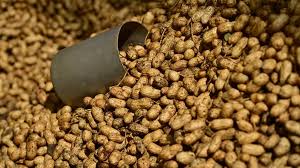Aflatoxin

- 21 Sep 2025
In News:
Indian exporters have expressed concerns regarding delays by Indonesia in notifying aflatoxin contamination detected in groundnut shipments from India. This has raised issues about trade compliance and the need for timely communication in international agricultural trade.
Understanding Aflatoxins
- Aflatoxins are highly toxic substances classified as mycotoxins, produced by certain species of fungi. The main fungi responsible are Aspergillus flavus and Aspergillus parasiticus, which belong to the broader Aspergillus group.
- These fungi primarily thrive on agricultural crops, but can also be found in soil, decaying food, and compost. They develop as spores and form networks of microscopic filaments capable of growing on products such as grains, nuts, and other food items.
Sources and Conditions of Contamination
- Aflatoxin contamination commonly occurs in groundnuts, tree nuts, maize, rice, figs, spices, crude vegetable oils, and cocoa beans.
- Contamination can happen before harvest or during storage, especially in warm and humid conditions, which favor fungal growth.
Health Implications
Aflatoxins are genotoxic and carcinogenic, posing serious health risks to both humans and animals. Long-term exposure may lead to liver damage, immunosuppression, and increased cancer risk.
Modes of Human Exposure
- Dietary Intake: Consuming contaminated plant products like peanuts or animal products (meat, milk) from animals fed contaminated feed.
- Occupational Exposure: Farmers, processors, and other agricultural workers may inhale dust containing fungal spores during handling, harvesting, or processing contaminated crops.
This incident underscores the importance of stringent quality control and timely international reporting to prevent health risks and maintain confidence in agricultural trade.
